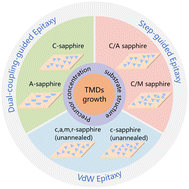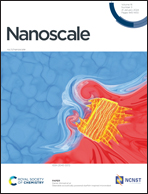Large-area single-crystal TMD growth modulated by sapphire substrates
Abstract
Transition metal dichalcogenides (TMDs) have recently attracted extensive attention due to their unique physical and chemical properties; however, the preparation of large-area TMD single crystals is still a great challenge. Chemical vapor deposition (CVD) is an effective method to synthesize large-area and high-quality TMD films, in which sapphires as suitable substrates play a crucial role in anchoring the source material, promoting nucleation and modulating epitaxial growth. In this review, we provide an insightful overview of different epitaxial mechanisms and growth behaviors associated with the atomic structure of sapphire surfaces and the growth parameters. First, we summarize three epitaxial growth mechanisms of TMDs on sapphire substrates, namely, van der Waals epitaxy, step-guided epitaxy, and dual-coupling-guided epitaxy. Second, we introduce the effects of polishing, cutting, and annealing processing of the sapphire surface on the TMD growth. Finally, we discuss the influence of other growth parameters, such as temperature, pressure, carrier gas, and substrate position, on the growth kinetics of TMDs. This review might provide deep insights into the controllable growth of large-area single-crystal TMDs on sapphires, which will propel their practical applications in high-performance nanoelectronics and optoelectronics.

- This article is part of the themed collection: Recent Review Articles


 Please wait while we load your content...
Please wait while we load your content...